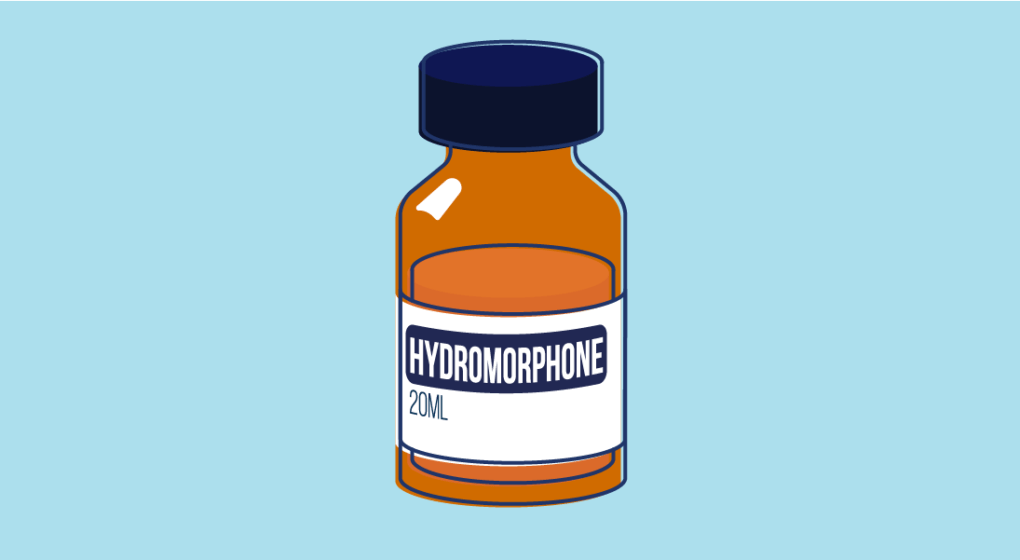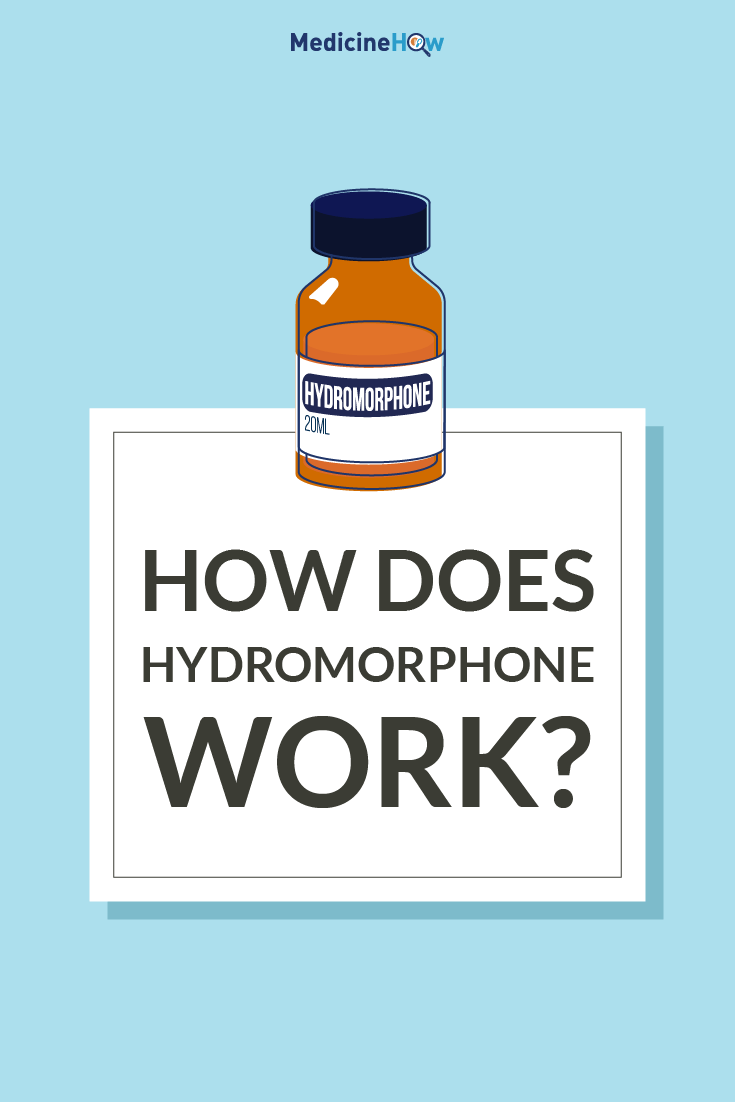
Hydromorphone is a type of drug called an opioid. It works by activating opioid receptors that naturally exist in your body, which has a number of effects on your body. One of the effects is to provide analgesia and relieve pain, which is what the drug is used for. It is usually recommended for moderate to severe pain relief.
Brand Names and Doses
Hydromorphone is the generic name, or the name of the actual drug component inside the medication. There are many different brand names of hydromorphone, depending on which company has manufactured the drug.
Some brand names of hydromorphone include:
- Dilaudid tablets - 2mg, 4mg or 8mg doses
- Jurnista XR tablets - 4mg, 8mg, 16mg, 32 mg or 64mg doses
- Dilaudid liquid - 1mg/ml dose
The Jurnista XR tablets are what we call "controlled release." This means that they are formulated in a special way so that the dose is gradually release into the body over a longer period of time. This is why the dose is of this brand is much higher, but you can take a dose of the medication less often.
If you are taking the Jurnista XR tablets, it is important to swallow them whole - don't break or chew them - because this can effect the way that hey release the drug to your body.
What type of drug is it?
Hydromorphone is a type of drug called an opioid. This is a drug class that helps us to group drugs that work in a similar way together. Other opioid medications include:
- Buprenorphine
- Codeine
- Dextropropoxyphene (Propoxyphene)
- Fentanyl
- Methadone
- Morphine
- Oxycodone
- Pethidine
- Tramadol
What is Hydromorphone used for?
Hydromorphone is usually in the relief of moderate pain to severe pain.
It can be used for either acute or chronic pain. Therefore, it can be a good option to relieve pain after a certain incident that caused pain or on an ongoing basis to provide continuous pain relief.
How does Hydromorphone work?
Everyone naturally has endogenous opioids inside their body, which can bind to special receptors, called opioid receptors, to activate several effects in the body. When an endogenous opioid attaches to the right receptor, it can lead to:
- Analgesia to relieve pain
- Slowing down of breathing
- Feeling tired
- Difficulty defecating
Hydromorphone manipulates this natural process by activating the same receptors that the endogenous opioids do. It mimics the effect of natural opioids in your body.
It can also decrease the transmission of pain impulses in the body by interrupting the pain messages in the spinal cord and interfering with the messages coming from the brain in the central nervous system (CNS).
Side Effects
There are several general side effects of opioid medications such as hydromorphine that can affect some people, such as drowsiness, dizziness, headache, dry mouth and urinating less often.
You can find out more information about some of the specific side effects by clicking on them below.
Nausea
Constipation
Respiratory Depression
Dependence
Cautions
There are also some people who may need special attention if they take hydromorphone due to other medications they are taking or health conditions they have.
For example, if you have the following conditions often you may need a lower dose of hydromorphone than usual:
- Slow heart rate (bradycardia)
- Endocrine disease
- Hypothyroidism
- Adrenocortical insufficiency
- Myasthenia gravis
- Central nervos system (CNS) depression
- Frequent use of alcohol
Additionally, people with epilepsy are more likely to have a seizure while taking hydromorphone, so this should be considered.
Special Cases
If you have poor renal or metabolic function will need a reduced dose of hydromorphone. This is because your body clears the drug out of the body less quickly, so it can easily build up inside the body and increase the effects of the drugs (both pain-relieving effects and side effects.)
People who are elderly often require a lower dose of hydromorphone than other adults. This is because they often have poor kidney or liver function and are more likely to experience side effects, such as cognitive impairment, sedation and respiratory depression. They may also be at risk for having a fall.
Interactions
Taking hydromorphone at the same time as another drug can sometimes change their effect on your body because of the way they interact.
Any medication that blocks the action of opioids, such as buprenorphine, naloxone or naltrexone, can decrease the action of hydromorphone. These drugs are not usually used together.
All drugs that cause your breathing to slow down can increase the risk of a serious side effect of hydromorphone: respiratory depression. Many drugs to lower blood pressure, such as beta blockers, can have this effect. This combination can be used, but it's important that your doctor knows that you are taking hydromorphone and checks that the dose is right for your body.
Some drugs that are used in the treatment of depression called selective seretonin reuptake inhibitors (SSRIs) can cause a condition called seretonin toxicity. The risk of this is higher if dextropropoxylene is taken at the same time, so you need to be on the lookout for early signs.
Pregnancy and Breastfeeding
Hydromorphone is not recommended for women who are pregnant for two main reasons. Firstly, there is an increased risk of respiratory depression for the baby, which may be fatal in some cases. Secondly, it is possible for your baby to experience withdrawal effects after being born due to the sudden decrease in dose when they are no longer connected to your blood stream.
Instead, it is usually best for pregnant women to take other medications as a the first option to relieve pain while they are pregnant, such as paracetamol.
For women who are breastfeeding, occasional doses of hydromorphine may occasionally be used. However, there may be some risk to your baby if they are used every day for an extended period of time.
Pin it!


